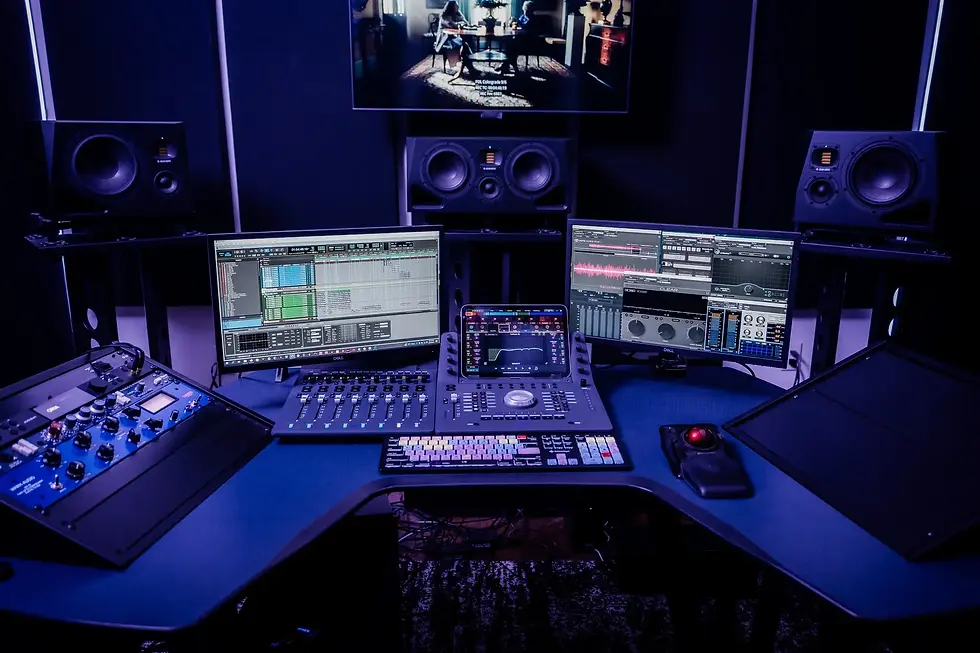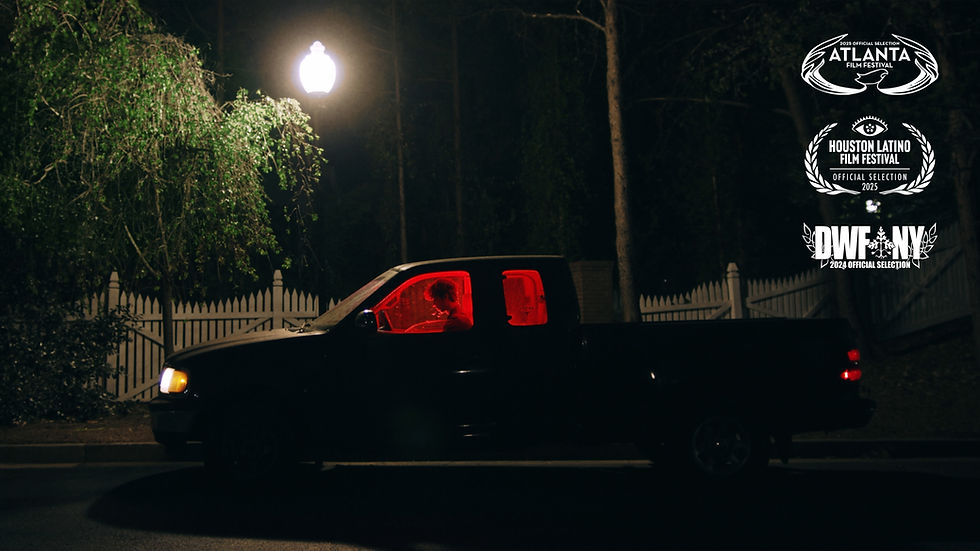Why Every Short Film & Theatrical Release Should Have a 5.1 Mix
- Matthew Harriott
- Aug 1
- 4 min read
Updated: Aug 18

Filmmakers typically prioritize cameras, lenses, and visuals when working on a project, while audio is more often than not treated as an afterthought. Yet in the theater, sound has as much impact on the audience as what they see on the screen. Dialogue, music, and sound design all need space to breathe, and stereo alone often falls short in delivering that immersive cinematic experience.
A 5.1 surround mix is no longer a luxury reserved for big-budget features. It is the standard for professional screenings, festivals, and theatrical releases. For short films in particular, where every element must work harder to engage audiences and juries, 5.1 mixing can make the difference between a film that feels amateur and one that leaves a lasting impression.
What Is a 5.1 Mix?
A 5.1 mix refers to a six-channel surround sound format:
Front Left & Right: Create width and dimension for music, sound effects, and ambiences.
Center: Anchors dialogue so it remains clear and intelligible.
Surround Left & Right: Add depth and immersion with environmental sounds and effects.
Low Frequency Emitter (LFE): Provides low-frequency impact for music, design, and effects to really add that extra oopmh that an audience can feel in their bones.
This format envelops audiences, matching the way commercial theaters and festivals are designed for audio playback.
Why Stereo Isn’t Enough for Theatrical
Stereo mixes (left and right channels only), while effective for headphones and laptops often fall flat in a theatrical environment. Without a dedicated center channel, the dialogue may feel buried or thin within the mix, music and effects compete for limited space, and immersion suffers as there are no rear speakers to build atmospheres and envelop your audience.
To put it plainly: a stereo mix flattens the sound in a theatrical setting whereas a 5.1 mix unlocks the depth and dimension that audiences expect in theaters.
The Festival Factor
Film festivals are competitive, and first impressions matter. Screeners and juries are attuned to quality, and a strong 5.1 mix instantly communicates professionalism and elevates storytelling. Conversely, stereo mixes may reveal flaws, leaving films sounding unfinished compared to others in the lineup.

Many festivals now require or strongly recommend 5.1 deliverables. Even if stereo is accepted, films mixed in 5.1 consistently perform better in screenings. Clearer dialogue, immersive environments, and dynamic soundscapes elevate storytelling, keep audiences engaged, and help make films stand out amongst the competition.
Storytelling Benefits of a 5.1 Mix for Short Films
The move from stereo to surround is not just a technical one, it is creative.
With a 5.1 surround mix, filmmakers and sound teams can:
Place sound effects directionally around the viewer, matching on-screen action.
Build ambiences that surround audiences, transporting them into the world of the film.
Separate dialogue from music, ensuring every word is intelligible.
Use low frequencies to heighten tension, emotion, and impact.
A 5.1 mix allows sound to become a three-dimensional canvas rather than a flat layer under the visuals.
ROI for Indie Filmmakers
For short films, budgets are often tight, and it can be tempting to stick with stereo. But the return on a 5.1 mix is substantial and is often an investment that pays off:
Better Festival Performance with increased chances of selection and audience engagement.
Distribution Ready for streaming, broadcast, or theatrical deliverable requirements from specific platforms and distributors.
Future-Proofed Assets that remain useful for Blu-Ray, archival screenings, or an eventual placement on a streaming service.
Professional Perception that elevates both the filmmaker’s reputation among peers and industry decision-makers as well as the project amongst any competing films.
You may think skipping 5.1 can you some money in the short term, but it can undermine years of work and limit opportunities for the success of your film.
The Technical Side: Getting to 5.1
A proper 5.1 mix involves more than duplicating tracks across channels. It requires:
Professional dialogue editing to ensure clarity in the center channel.
Foley and sound design tailored to surround playback in theatrical environments.
Panning and spatialization for precise placement of elements in the correct speaker locations.
Calibration in an acoustically treated environment to ensure mixes are accurately translated in theaters.
Without these steps, films risk translation issues in screenings, leaving audiences with a flat and unbalanced experienced. Working with a professional post-production studio ensures the mix is accurate and ready for any screening.
Final Takeaway: Make Your Film Sound Cinematic
Audiences expect a cinematic experience regardless of a film's budget, and this is especially true for a film being screened in a theatrical setting. A 5.1 mix transforms short films from “good” to “festival-ready” by delivering clarity, immersion, and impact. For filmmakers investing months or years into a project, skipping 5.1 is like projecting a film without color correction. A 5.1 mix is no longer optional. It is the standard.
Every short film and theatrical release deserves to be heard in the format audiences expect. Investing in a professional 5.1 mix ensures that your story is heard as powerfully as it is seen, giving every film its best chance to connect with audiences and succeed in the marketplace.
A professional 5.1 mix is not just about technical compliance. It is about storytelling power, audience engagement, and long-term opportunity.




Comments